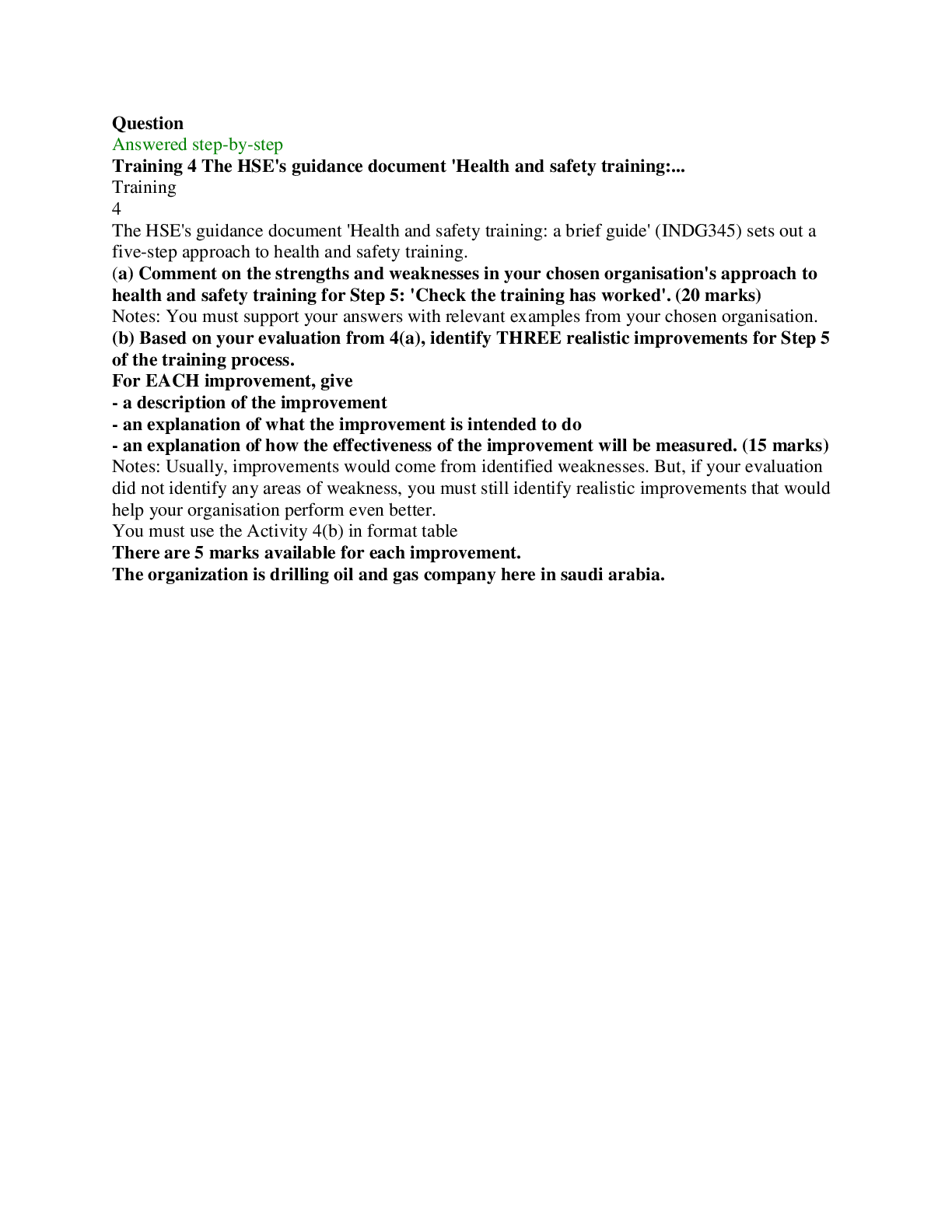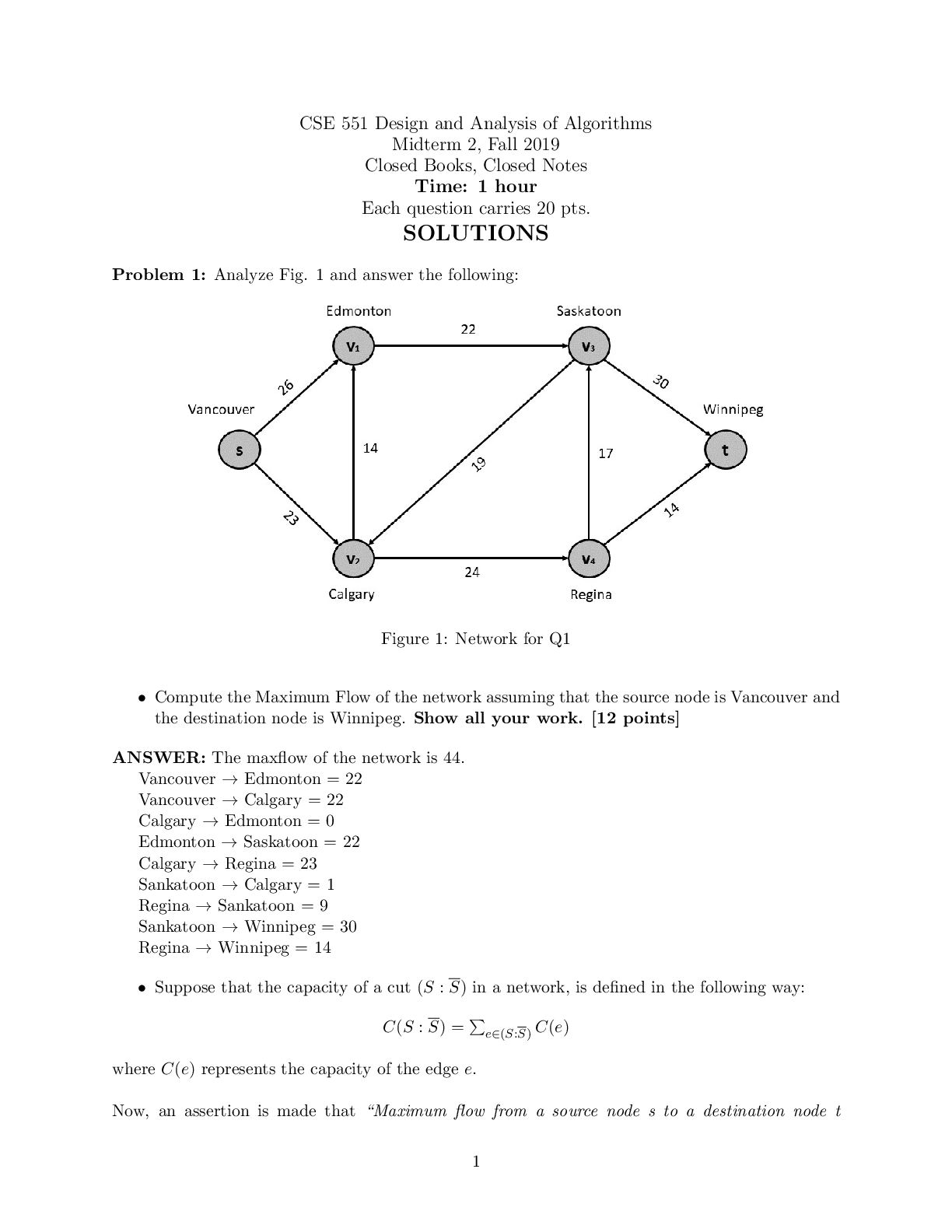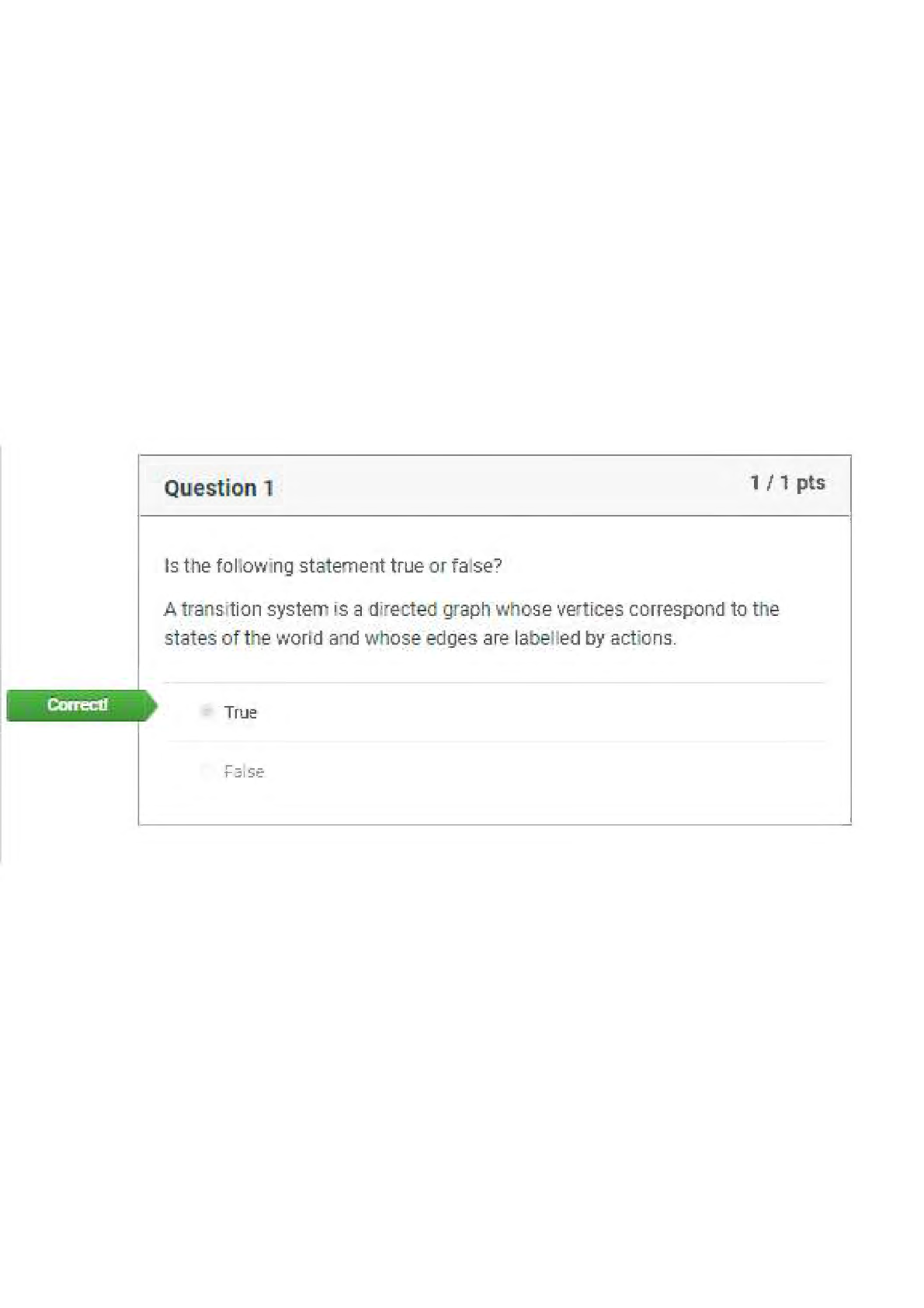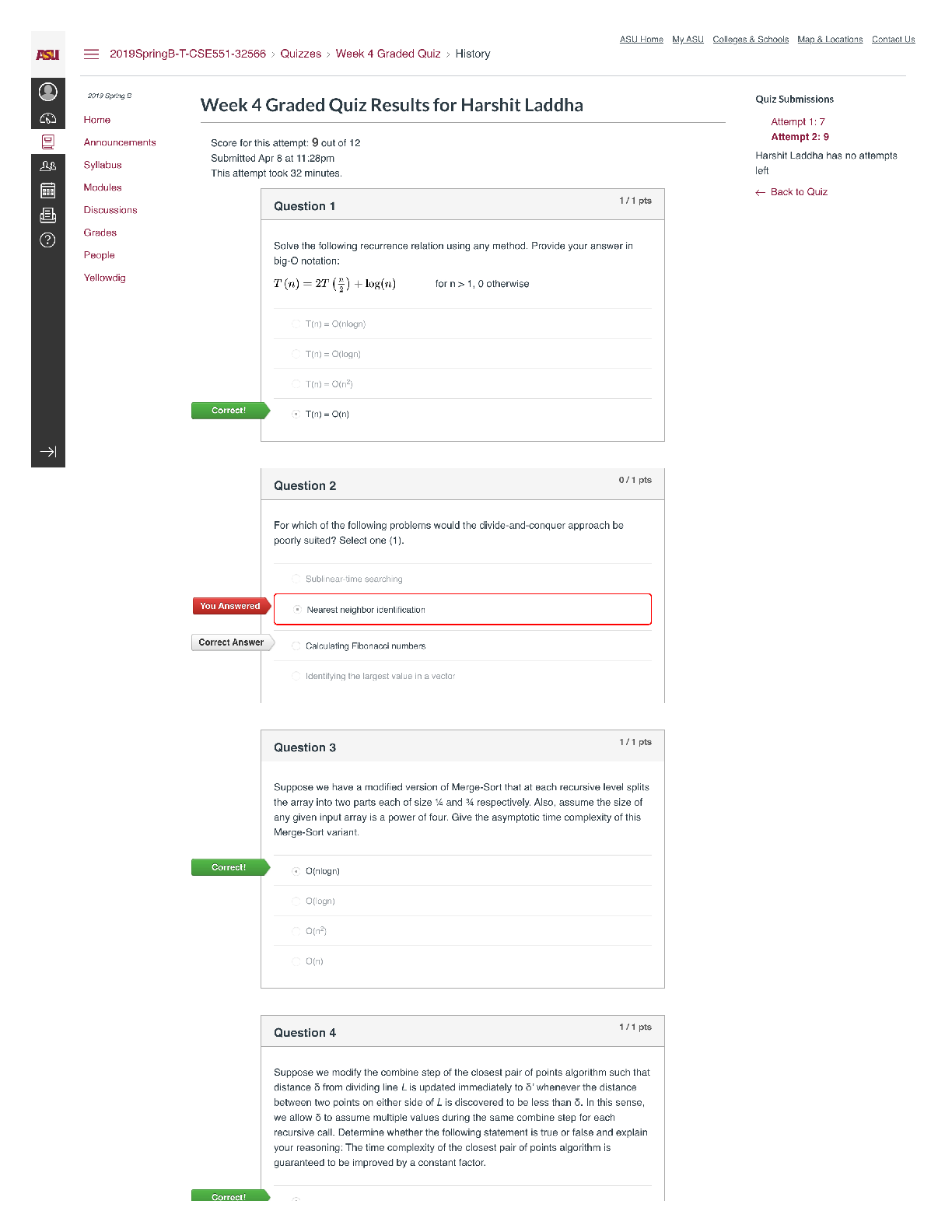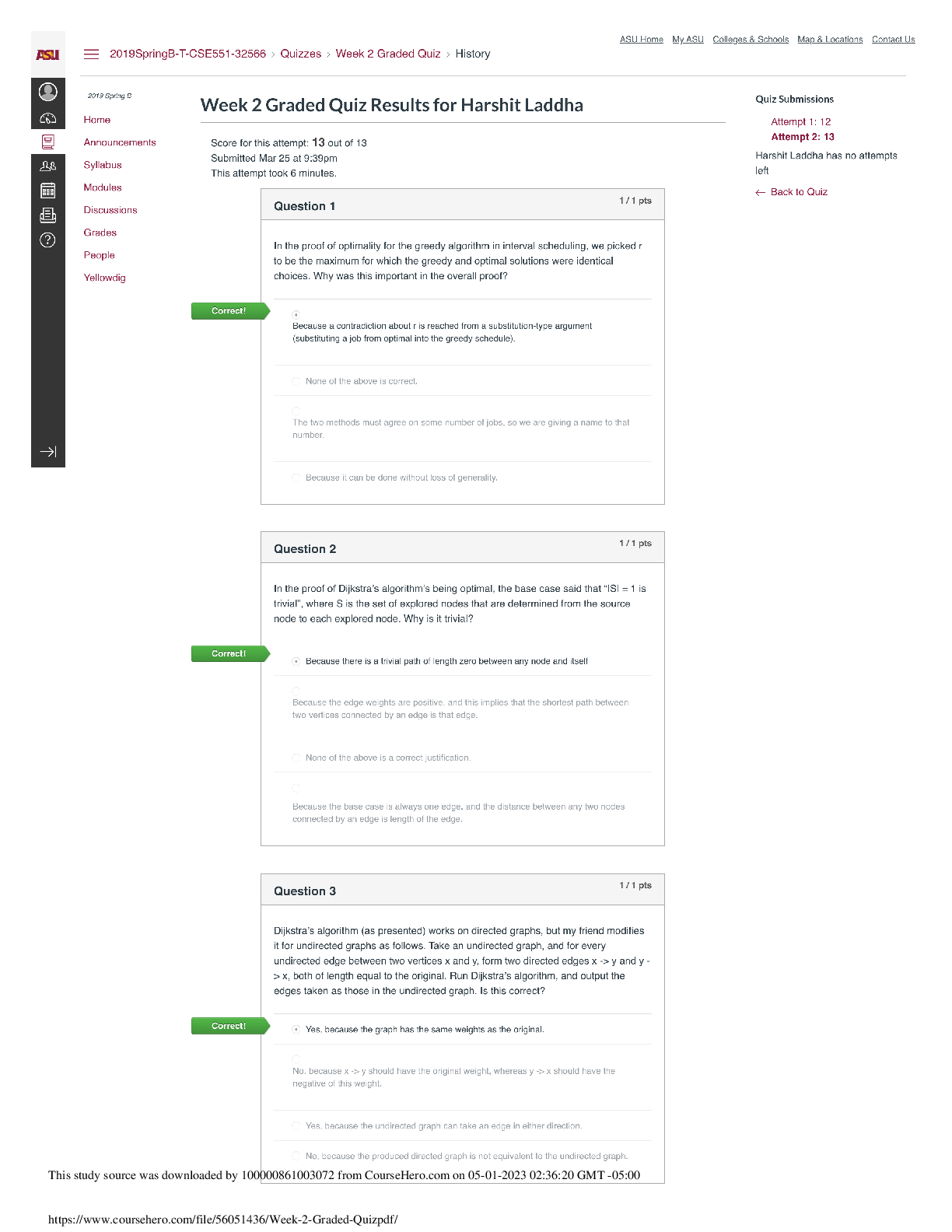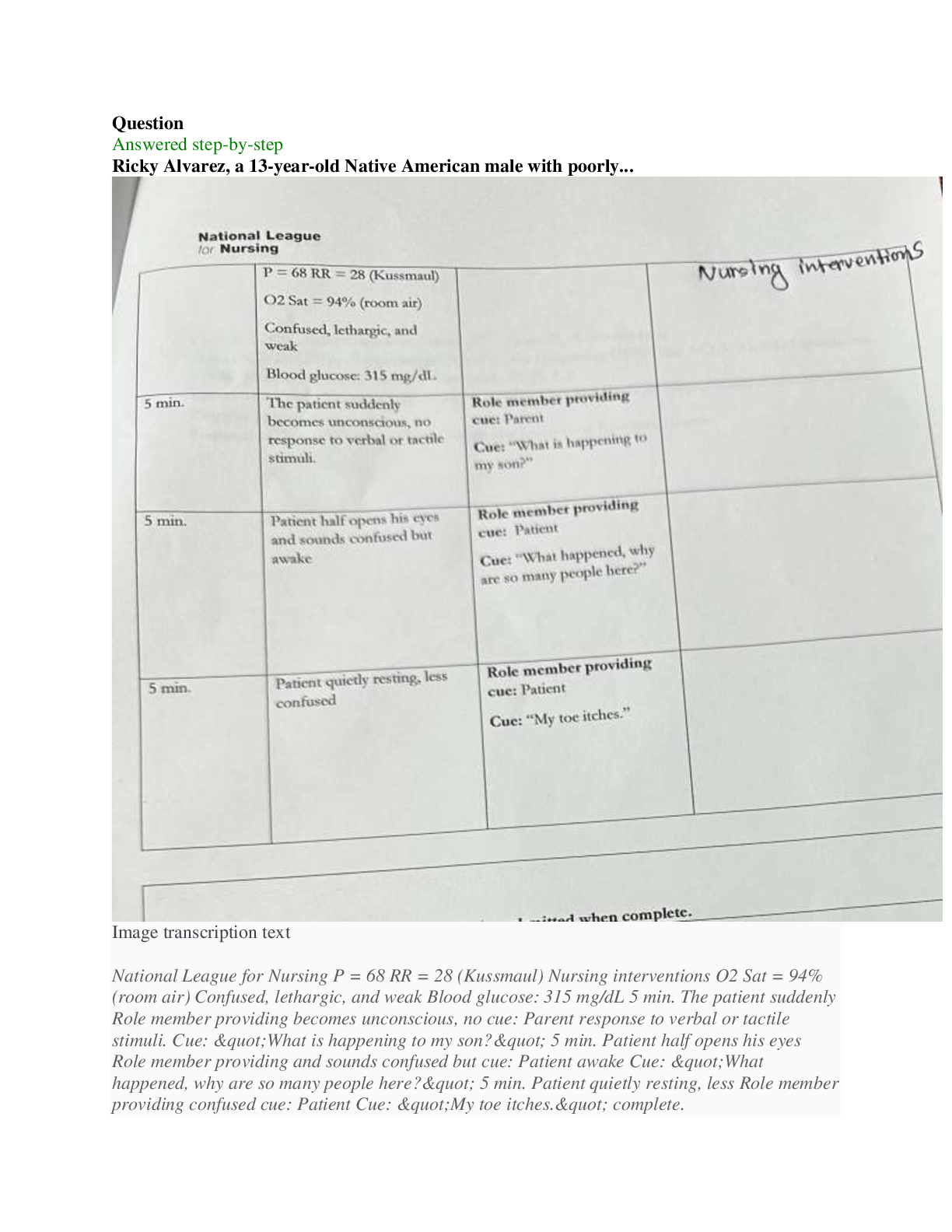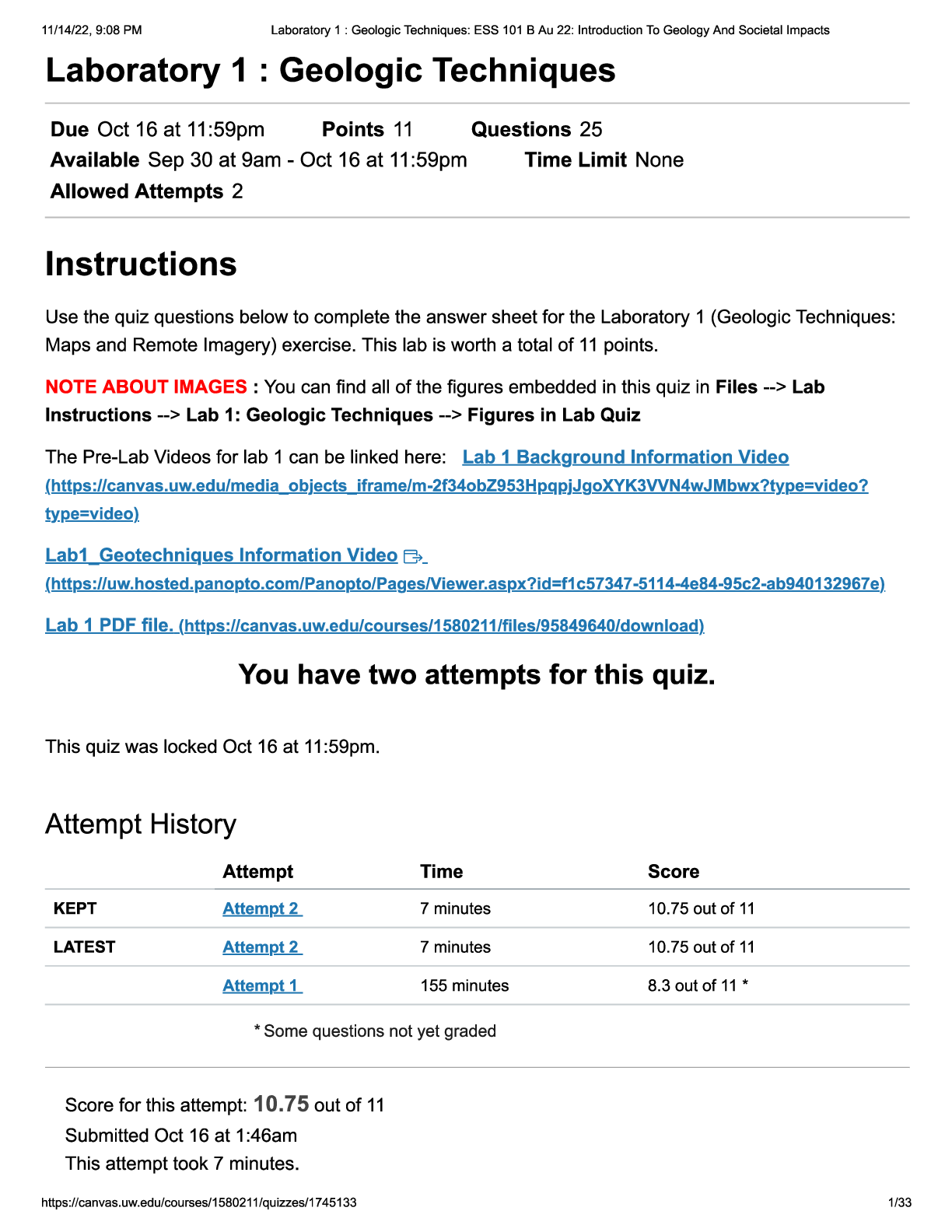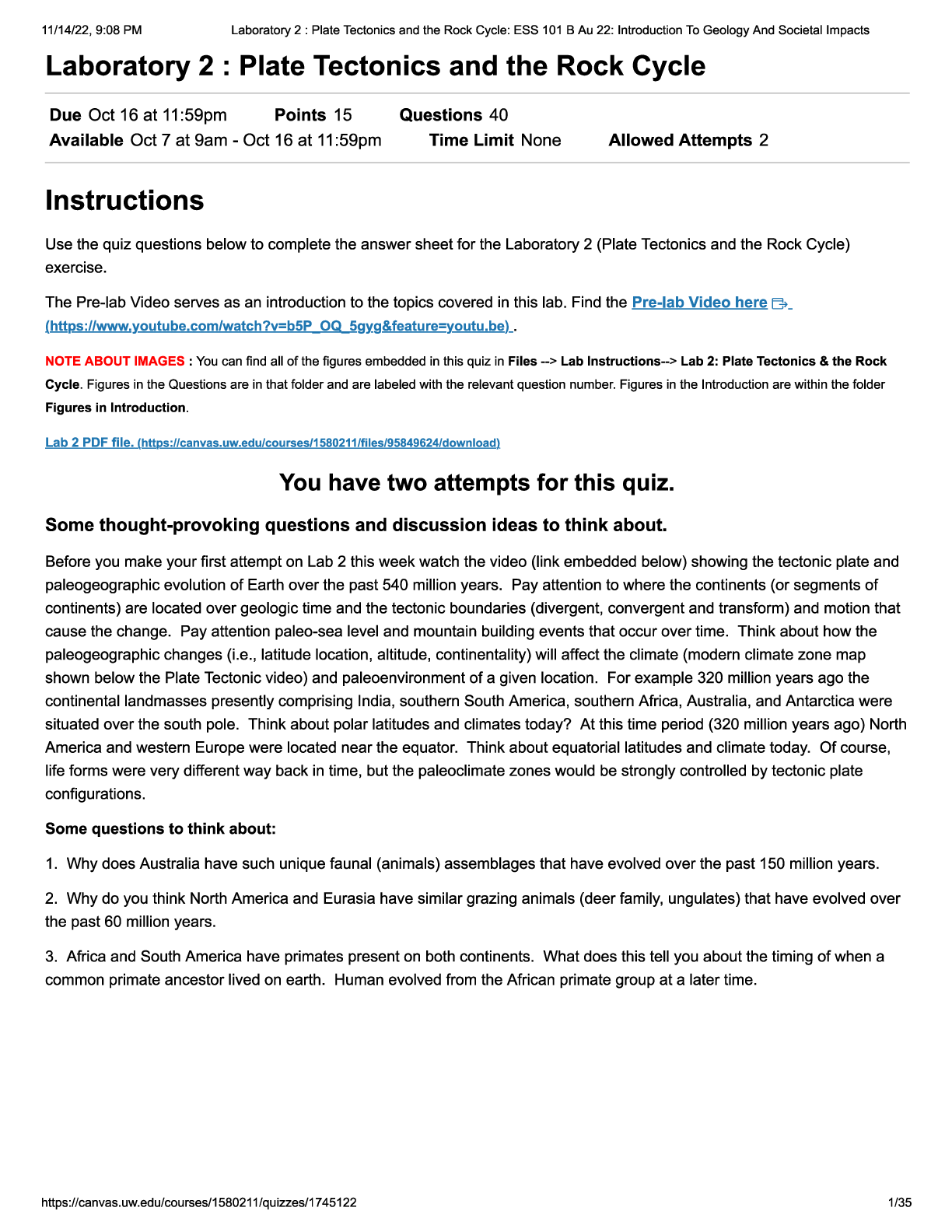Chemistry > QUESTIONS & ANSWERS > CHEMICAL E 321 _ MASS TRANSFER TUTORIAL Gas Absorption, Humidification, Drying. Q&A Plus Worked Solu (All)
CHEMICAL E 321 _ MASS TRANSFER TUTORIAL Gas Absorption, Humidification, Drying. Q&A Plus Worked Solutions
Document Content and Description Below
CHEMICAL E 321 _ MASS TRANSFER TUTORIAL Gas Absorption, Humidification, Drying. Q&A Plus Worked Solutions A stream of air at 100˚C and 5260 mmHg contains 10% water by volume. Calculate the dew point... . a. 90˚C b. 72˚C c. 83˚C d. 65˚CA stream of air at 100˚C and 5260 mmHg contains 10% water by volume. Calculate the percentage of the vapor that condenses if the air is cooled to 80˚C at constant pressure. a. 20% b. 30% c. 25% d. 35%A stream of air at 100˚C and 5260 mmHg contains 10% water by volume. Calculate the percentage of the vapor that condenses if the air is compressed isothermally to 8500mmHg. a. 12% b. 18% c. 15% d. 13%relative humidity of the water vapor in the air is 25. If partial pressure of water vapor when air is saturated with vapor at 300K is 3.6kPa, calculate the partial pressure of the water vapor in the vessels. a. 0.2 b. 0.5 c. 0.7 d. 0.9In a vessel at 101.325kPa and 300K, the percentage relative humidity of the water vapor in the air is 25. If partial pressure of water vapor when air is saturated with vapor at 300K is 3.6kPa, calculate the absolute humidity of the air. a. 0.006 b. 0.003 c. 0.001 d. 0.008In a vessel at 101.325kPa and 300K, the percentage relative humidity of the water vapor in the air is 25. If partial pressure of water vapor when air is saturated with vapor at 300K is 3.6kPa, calculate the humid volume. a. 0.352 b. 0.109 c. 0.856 d. 0.264In a vessel at 101.325kPa and 300K, the percentage relative humidity of the water vapor in the air is 25. If partial pressure of water vapor when air is saturated with vapor at 300K is 3.6kPa, calculate the percentage humidity. a. 31% b. 46% c. 10% d. 24%The absolute humidity of a carbon dioxide–water vapor mixture at 310K and 100kPa is measured to be 0.022. Calculate the molal humidity. a. 0.0267 b. 0.0336 c. 0.0537 d. 0.0011The absolute humidity of a carbon dioxide–water vapor mixture at 310K and 100kPa is measured to be 0.022. Calculate the percent relative saturation. a. 82.2% b. 80.4% c. 81.5% d. 84.9%The absolute humidity of a carbon dioxide–water vapor mixture at 310K and 100kPa is measured to be 0.022. Calculate the percent saturation. a. 82.4% b. 80.4% c. 81.2% d. 84.9%The absolute humidity of a carbon dioxide–water vapor mixture at 310K and 100kPa is measured to be 0.022. Calculate the temperature to which the gas is to be heated at constant pressure to reduce its saturation percent to 30%. a. 337.5K b. 327.5K c. 345.5K d. 461.5KA gas mixture contains 0.0083 mol of water vapor per mol of dry methane at a temperature of 27˚C and a total pressure of 200kPa. Calculate the % relative saturation of the mixture. a. 46% b. 33% c. 58% d. 60%A gas mixture contains 0.0083 mol of water vapor per mol of dry methane at a temperature of 27˚C and a total pressure of 200kPa. Calculate the % saturation of the mixture. a. 65% b. 77% c. 46% d. 50%A gas mixture contains 0.0083 mol of water vapor per mol of dry methane at a temperature of 27˚C and a total pressure of 200kPa. Calculate the temperature (˚C) to which the mixture must be heated at 200kPa in order for the relative saturation to be 0.2. a. 53 b. 64 c. 37 d. 42In a process in which it is used as a solvent, benzene is evaporated into dry nitrogen. At 297K and 101.3kPa, the resulting mixture has a percentage relative humidity of 60. It is required to recover 80% of the benzene present by cooling to 283K and compressing to a suitable pressure. What should this pressure be? The vapor pressure of benzene is 12.2kPa at 297K and 6kPa at 283K. a. 391kPa b. 353kPa c. 345kPa d. 386kPa30,000m of cool gas (measured at 289K and 101.3 kPasaturated with water vapor) is compressed to 340kPa pressure, cooled to 289K and the condensed water is drained off. Subsequently the pressure is reduced to 170kPa and the gas is distributed at this pressure and 289K. What is the percentage humidity after this treatment? The vapor pressure of water at 289K is 1.8kPa. a. 26.5% b. 49.73% c. 31.25% d. 54.91%The air supply for a dryer has a dry-bulb temperature of 70˚F and a wet bulb temperature of 60˚F. It is heated to 200˚F by coils and blown into the dryer. In the dryer it cools along an adiabatic cooling line and leaves the dryer fully saturated. What is the dew point of the initial air? a. 62 b. 35 c. 40 d. 54The air supply for a dryer has a dry-bulb temperature of 70˚F and a wet bulb temperature of 60˚F. It is heated to 200˚F by coils and blown into the dryer. In the dryer it cools along an adiabatic cooling line and leaves the dryer fully saturated. What is its humidity? a. 0.0066 b. 0.009 c. 0.008 d. 0.0052The air supply for a dryer has a dry-bulb temperature of 70˚F and a wet bulb temperature of 60˚F. It is heated to 200˚F by coils and blown into the dryer. In the dryer it cools along an adiabatic cooling line and leaves the dryer fully saturated. What is its % relative humidity? a. 33% b. 44% c. 55% d. 66%The air supply for a dryer has a dry-bulb temperature of 70˚F and a wet bulb temperature of 60˚F. It is heated to 200˚F by coils and blown into the dryer. In the dryer it cools along an adiabatic cooling line and leaves the dryer fully saturated. How much heat is needed to heat 100ft3 to 200˚F? a. 234BTU b. 107BTU c. 168BTU d. 240BTUThe air supply for a dryer has a dry-bulb temperature of 70˚F and a wet bulb temperature of 60˚F. It is heated to 200˚F by coils and blown into the dryer. In the dryer it cools along an adiabatic cooling line and leaves the dryer fully saturated. How much water will be evaporated per 100ft3 of entering air? a. 0.262lb b. 0.333lb c. 0.185lb d. 0.497lb [Show More]
Last updated: 2 years ago
Preview 1 out of 95 pages
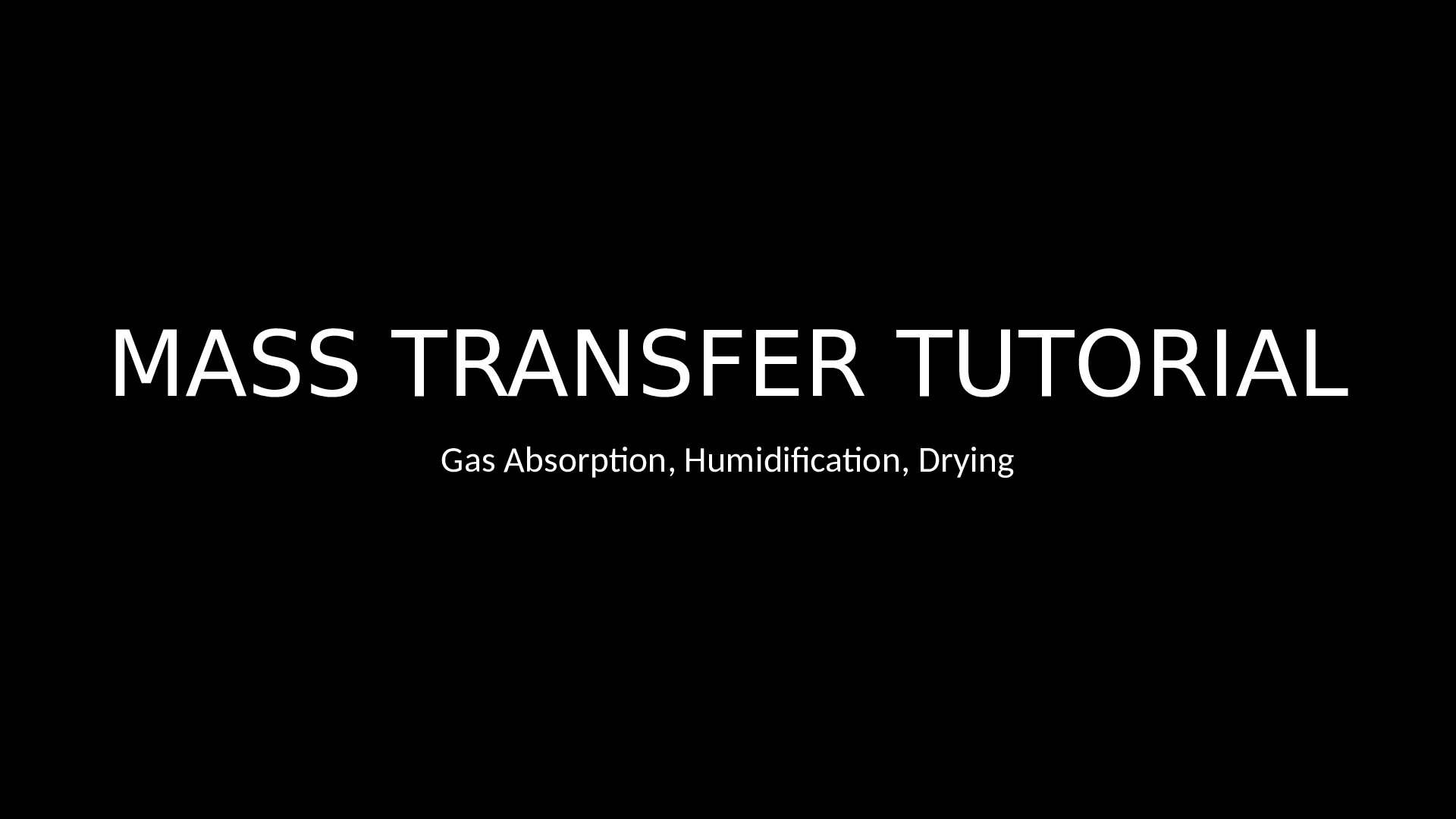
Buy this document to get the full access instantly
Instant Download Access after purchase
Buy NowInstant download
We Accept:

Reviews( 0 )
$9.50
Can't find what you want? Try our AI powered Search
Document information
Connected school, study & course
About the document
Uploaded On
Apr 18, 2023
Number of pages
95
Written in
Additional information
This document has been written for:
Uploaded
Apr 18, 2023
Downloads
0
Views
45

